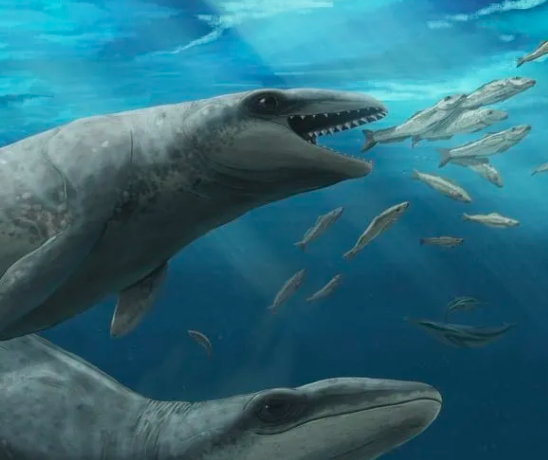The Pokémon Whale: When Paleontology Accidentally Logged On
How a newly discovered prehistoric sea creature became the internet’s favorite meme before it got its Latin name.
FEATUREDSCIENCEWORLD NEWS


Science rarely trends.
You can publish a paper about quantum gravity or microbial extremophiles, and the internet will collectively shrug. But give the world a fossil that looks like a Pokémon — and suddenly, everyone’s a paleontologist.
That’s what happened this week when researchers in Peru announced the discovery of a massive, 40-million-year-old whale with a body so strange, so cartoonishly shaped, that Twitter (sorry, “X,” but no one means that) did what it does best: forgot about the science and made memes.
It was supposed to be a serious finding — a window into the evolutionary transition from land mammals to fully aquatic giants. Instead, it became “the whale that looks like a Snorlax evolution.”
The Birth of a Meme-Saur
The fossil, found in the Ica Desert, was identified as Perucetus colossus, one of the heaviest animals to ever live. It had a skeleton so dense it might have outweighed even today’s blue whale. But what captured the public imagination wasn’t the weight. It was the shape.
Broad body. Short limbs. A vaguely smiling skull.
Within hours of the press release, the creature’s digital afterlife began. Someone on Reddit posted, “Looks like a Water/Ground type.” Another replied, “Yeah, evolves from Blubberchu at level 36.” Someone else photoshopped it onto a Pokémon card, complete with abilities: “Ocean Belly Slam — 120 damage.”
By morning, scientists were sharing the memes too. The lead paleontologist reportedly said in an interview, “I don’t mind. If people get excited about whales because of Pokémon, that’s a win for education.”
This is how modern science works now: you make a discovery, and then the internet makes it ridiculous.
The Meme-ification of Deep Time
There’s something profoundly 21st-century about all this — the way prehistory and pop culture can collide so seamlessly.
Fossils used to live in museums, quiet and reverent, labeled in Latin. Now they live in timelines, captioned in all caps.
When Charles Darwin discovered a new species, he had to wait months for public reaction — letters, editorials, scholarly debates. Today, the feedback loop takes four seconds and includes emojis.
But maybe that’s not a bad thing.
Because beneath the silliness, something real happens when people start making memes about ancient life: they start caring. They Google. They learn. Somewhere between the jokes about “evolving from a couch” and “GigaChad whale,” there’s genuine awe.
Awe is the gateway drug of science.
The Whale That Time Forgot (Then Rediscovered Online)
To appreciate the weirdness of Perucetus colossus, you have to picture its world: the Eocene epoch. A time when the planet was hot, lush, and filled with creatures that seemed designed by a committee of feverish interns.
This whale wasn’t sleek like today’s blue whales. It was more like a submarine built by someone who only vaguely remembered what boats looked like. It moved slowly, lumbering through shallow waters, its dense bones weighing it down to the sea floor where it probably scavenged for food.
In other words: a gentle, obese sea monster.
Nature, at her most honest, often resembles self-parody.
And maybe that’s why the internet loves this story — because the fossil record, stripped of our romanticism, looks a lot like the timeline: chaotic, memeable, and full of evolutionary dead ends.
Pokémon, Paleontology, and the Search for Meaning in Both
It’s not an accident that people saw Pokémon in this creature.
Pokémon, after all, is just pop culture’s remix of evolution — Darwinian theory in Technicolor. Creatures that adapt, evolve, and occasionally sprout wings for no discernible reason. Each has a name, a lore, and a fandom. Sound familiar?
Scientists do the same thing, just with less merch.
The Pokémon analogy also reveals something about our generation’s relationship with knowledge. We no longer approach the unknown with reverence — we approach it with a meme template. It’s how we make the infinite digestible.
When we say the whale “looks like a Pokémon,” what we mean is: it looks like something we can love without fully understanding.
The Scientists Strike Back (Gently)
The research team, led by paleontologist Dr. Giovanni Bianucci, handled the attention with grace. They tweeted, “We’re glad people are excited — but remember, this animal weighed up to 200 tons!”
That tweet was immediately quote-posted with, “Big boy confirmed 🐋🔥💪.”
So it goes.
Science communication in 2025 isn’t about peer review. It’s about meme fluency. If you can’t get the internet to notice your discovery, it might as well not exist.
But in this case, the virality helped. Museums saw spikes in attendance. The original research paper was downloaded thousands of times. Even merch shops jumped in — Etsy sellers offering “Perucetus Evolution” shirts faster than you can say “intellectual property infringement.”
The line between scientific discovery and cultural event has officially dissolved.
Why We Need Silly Science
There’s a temptation among intellectuals to dismiss all this — to roll eyes at the memes, the simplified headlines, the public’s short attention span.
But that cynicism ignores a fundamental truth: curiosity doesn’t care how it starts.
If someone learns about cetacean evolution because they laughed at a Pokémon meme, that’s not a failure of science — it’s proof that humor still has power.
We live in a culture allergic to earnestness. The internet punishes sincerity. And yet, under the layers of irony, people are still yearning for wonder. They just express it through absurdity.
Perucetus colossus became a joke, yes. But it also became a symbol — proof that we can still be collectively amazed by something that isn’t political, monetized, or algorithmically optimized.
The Museum Problem
Here’s the quiet tragedy: most fossils never get this kind of attention.
They’re studied, catalogued, and quietly filed away in drawers where even grad students forget them. Meanwhile, Perucetus has become an international celebrity. Not because of its evolutionary significance, but because it looks like a sleepy cartoon.
That’s the double-edged sword of virality. The same thing that makes something famous also flattens it. The memes keep spreading long after the meaning has decayed.
A hundred years from now, schoolchildren might remember “the Pokémon whale” and not “one of the heaviest marine mammals ever discovered.” And maybe that’s fine. Maybe that’s evolution, too — of language, of culture, of how we digest information.
Knowledge mutates. So does humor.
The Whale as a Mirror
When you look at Perucetus colossus, you’re not just seeing an ancient whale. You’re seeing us.
A civilization that built supercomputers, then used them to make fun of bones.
A culture that found a miracle of geology and immediately asked, “So what’s its power level?”
We turn everything sacred into content — not because we don’t care, but because it’s the only way we know how to process the sublime.
It’s easier to laugh than to feel small in the face of deep time.
The Final Evolution
Weeks from now, the meme will fade. Another discovery will take its place — a spider that looks like a croissant, maybe, or an asteroid shaped like Elon Musk’s head.
But the whale will remain. In a desert in Peru, half-buried in sandstone, a reminder that the universe is funnier than we are.
And somewhere, a paleontologist will be brushing dust off another fossil, hoping — perhaps secretly — that it looks a little silly. Because in this age, absurdity is the new awe.
